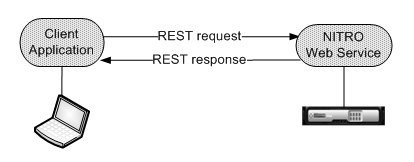-
Configuring and Managing NetScaler instances
-
-
How NITRO Works
This content has been machine translated dynamically.
Dieser Inhalt ist eine maschinelle Übersetzung, die dynamisch erstellt wurde. (Haftungsausschluss)
Cet article a été traduit automatiquement de manière dynamique. (Clause de non responsabilité)
Este artículo lo ha traducido una máquina de forma dinámica. (Aviso legal)
此内容已经过机器动态翻译。 放弃
このコンテンツは動的に機械翻訳されています。免責事項
이 콘텐츠는 동적으로 기계 번역되었습니다. 책임 부인
Este texto foi traduzido automaticamente. (Aviso legal)
Questo contenuto è stato tradotto dinamicamente con traduzione automatica.(Esclusione di responsabilità))
This article has been machine translated.
Dieser Artikel wurde maschinell übersetzt. (Haftungsausschluss)
Ce article a été traduit automatiquement. (Clause de non responsabilité)
Este artículo ha sido traducido automáticamente. (Aviso legal)
この記事は機械翻訳されています.免責事項
이 기사는 기계 번역되었습니다.책임 부인
Este artigo foi traduzido automaticamente.(Aviso legal)
这篇文章已经过机器翻译.放弃
Questo articolo è stato tradotto automaticamente.(Esclusione di responsabilità))
Translation failed!
How NITRO Works
The NITRO infrastructure consists of a client application and the NITRO web service running on a NetScaler SDX appliance. The communication between the client application and the NITRO web service is based on REST architecture using HTTP or HTTPS.
Figure 1. NITRO workflow

Steps detailing the workflow:
- The client application sends a REST request message to the NITRO web service. When using the SDKs, an API call is translated into the appropriate REST request message.
- The web service processes the REST request message.
- The NITRO web service returns the corresponding REST response message to the client application. When using the SDKs, the REST response message is translated into the appropriate response for the API call.
To minimize traffic on the network, retrieve the whole state of a resource from the server. Make modifications to the state of the resource locally. Then upload it back to the server in one network transaction.
Note: Local operations on a resource (changing its properties) do not affect its state on the server until the state of the object is explicitly uploaded.
NITRO APIs are synchronous in nature. That is, the client application waits for a response from the NITRO web service before running another NITRO API.
Share
Share
In this article
This Preview product documentation is Cloud Software Group Confidential.
You agree to hold this documentation confidential pursuant to the terms of your Cloud Software Group Beta/Tech Preview Agreement.
The development, release and timing of any features or functionality described in the Preview documentation remains at our sole discretion and are subject to change without notice or consultation.
The documentation is for informational purposes only and is not a commitment, promise or legal obligation to deliver any material, code or functionality and should not be relied upon in making Cloud Software Group product purchase decisions.
If you do not agree, select I DO NOT AGREE to exit.